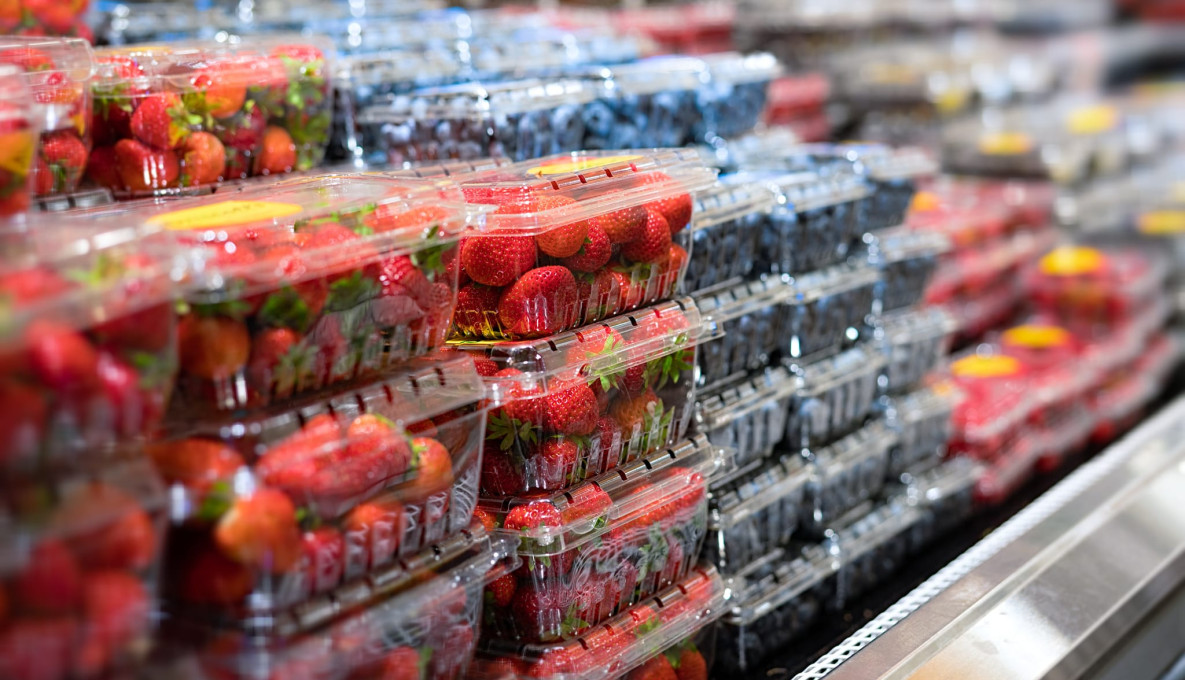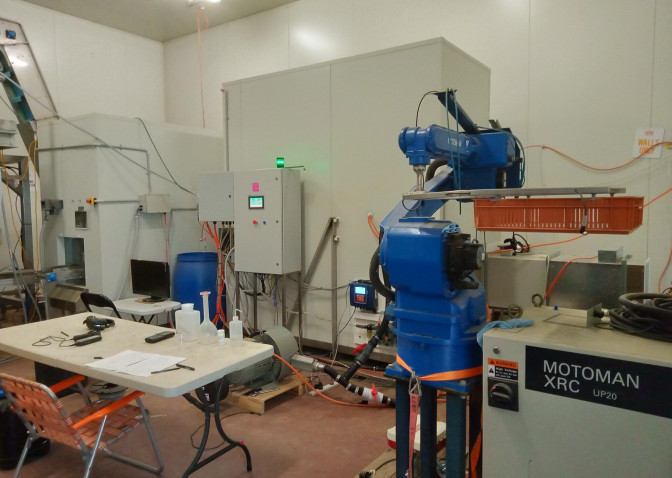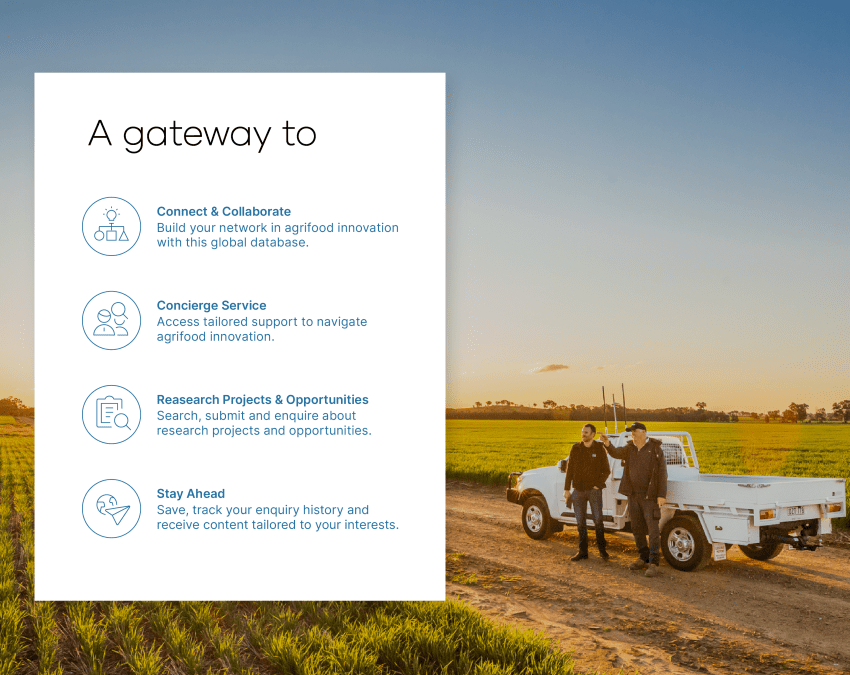
Cellysis extends shelf-life of fresh food, calls for investors
An innovative microbial reduction treatment developed by Victorian food technologist Andrew Inglis has succeeded in extending the shelf life of strawberries, fresh tomatoes and blueberries, in some cases by as much as 400%, and has been up-scaled to pilot plant.

Andrew Inglis, food technologist and Founder of Cellysis, is seeking a $500k investment partner to support the first commercialisation of his patented Cellysis treatment, which produces a multi-microbial reduction gas from individual liquid food grade biocides that kills bacteria, prevents spoilage and can permit further up-processing of some foods when retail shelf-life ends.^
The Cellysis microbial reduction treatment has also succeeded in extending blueberry shelf life to 65 days, in high humidity packaging. Research has proven the technology can be applied to items in all perishable food groups, including primal meats, sliced melon and cut salads.
The three food-approved chemicals that make up Cellysis, technically known as biocides, all break down to water, oxygen or acetic acid (vinegar) without leaving residual toxicity, meaning the technology could potentially be used to access export markets.
LEARN MORE: Cellysis 500k cap raise to extend fresh produce shelf-life here
Successful trials in strawberries, tomatoes
Related organisations

-width-1680.png)
Andrew is the inventor of the Vapor Phase Food Safety and Preservation method. In the past three years he has developed Cellysis technology and tested it successfully in minimum viable product trials at Sunnyridge Strawberry Farms, one of Victoria’s largest growers.
The trials are on track to reproduce R&D bench results of a 100% shelf life increase in strawberries and 90%+ elimination of soft berry defects. Bench scale R&D has also confirmed the process is applicable to capsicums, cucumbers, zucchinis, blackberries, raspberries, cherries with stems removed, and cheese.
Cellysis can also be used to treat primal meats with the outer carcase membrane intact for red meats, as well as white meats such as chicken carcases with skin on and to a lesser extent, leg and wing portions.
A chance conversation with a director of Flavorite Group tomatoes led to trials of Cellysis in Gippsland. Eight trials testing different surface concentrations on Flavorite Group tomatoes all succeeded in extending shelf life, and some eliminated mould growth to 75 days.
Additional trials are planned to ensure the biocide gas mix can be applied to all tomato types, since a challenge for some fruits is how quickly they ripen. Andrew says Cellysis has been developed to benefit the grower and packer, food distribution network, retailer, consumer and environment.
“Perishable foods, especially fresh produce, don’t currently have an efficient and effective post-harvest sanitation step to stop the growth of food pathogen and spoilage organisms. So globally we see continual food poisoning events, short shelf-lives and substantial food wastage,” Andrew explained.
“Cellysis optimises traditional food-approved biocides in various mixtures by converting them to the vapour (true gas) phase and accurately metering them onto the surface of perishable foods.
“The CSIRO has validated its ability, at both 4°C and 8°C, to substantially reduce Listeria monocytogenes which continues to cause fresh produce food poisoning outbreaks.”
Reduction in microbial load achieved cheaply and cleanly

Andrew says the water wash plants that are currently used for fresh produce typically achieve only a 0.5 to 1 log microbial reduction, and if not recirculated, can result in water useage of up to 400,000 litres per day.
“Cellysis achieved 4 to 6 log reductions, in its simplest configuration with no water,” he said.
“A lot of the foods that we eat will have at least one of these chemicals in a wash bath being used at a lot higher rate in a recirculation system, which can be very dirty, whereas we’re using 100% fresh clean chemical and eliminating non-volatile nasties through heat vaporisation.”
The process works efficiently, cheaply and accurately using modified conventional engineering that can be easily retro-fitted in factories, Andrew says.
Food is placed in a vapour partitioning passage, where offset manifolds direct the gaseous biocides onto the product at levels of parts per billion, but at high surface concentrations.
Andrew InglisIt’s good value for money, since we use a lot less food grade chemical. And it’s much cleaner, with substantially less environmental emissions
Ideal partner – global ag tech company or food business
Because the biocides used in Cellysis have no ongoing technical function in the food, they are classified as food processing aids by the Australian New Zealand Food Authority (ANZFA) and don’t require declaration as an ingredient in labelling.
“The problem with new fungicides to treat fresh produce is the huge regulatory process to seek approval, whereas the three biocides I’m using are approved in most countries as food grade biocides, not ag fungicides,” Andrew said.
Ideally he would like a global agritech company or vertically integrated food business to invest in the commercial development of Cellysis.
“NZ and Japan have banned all post-harvest fungicides now, so there’s reduced control over mould growth. Cellysis would slot in beautifully for a company previously in those markets,” he said.
“The other joint venture partner might be a company that makes high pressure plant processing equipment. In some cases, vapour phase tech and high pressure tech are complementary, but our capital cost is about 10% of a high pressure plant and the operating costs are cheap too.
“I’ve developed a spreadsheet where you can input the food’s surface area and other variables, which enables the whole process to adjust to similar fruits or vegetables and be treated at the push of a button.
“It’s ideally suited to fresh produce pack sheds, because the process is self-sanitising and has post process protection, which is ideal for moderately dusty environments.”
RELATED: Opportunity to invest in the tiny chip set to revolutionise animal healthcare^
Patent pending, research completed on range of processed meats
-Recovered-crop-672x478.png)
The patent is pending for Cellysis and investment will be used to optimise the first commercial process and gather all the operational data required for an efficient global rollout.
The first customer would support Cellysis in allowing external access to other potential customers and in return will be supported free of charge by Cellysis for at least 12 months and include other commercial considerations.
Andrew says major items of fresh produce and a diverse range of processed and some primal meats have been researched at bench level and are pilot plant ready for subsequent commercialisation.
RELATED: Almond farming pioneers introduce analyser of the future
Cellysis is one of a number of solutions providers to Stop Food Waste Australia, which aims to reduce food waste by 50% by 2030.
“A substantial number of Australian food processors and major food retailers are signatories to this pact, and Cellysis is one of the solution providers who actively support all pact signatories,” Andrew explained.
“Food waste reduction is one of the outcomes of the Cellysis process, so it offers a real solution to the industry for cheap and effective waste reductions.”
To find out more about Cellysis' opportunity, click here.
Explore, find and connect with a wealth of research projects and innovation opportunities from across Australia’s agrifood innovation system at growag.com. To list a research project, commercialisation opportunity or organisation, please visit growag.com/submit.
^This investment opportunity is only for professional and sophisticated investors as defined in the Corporations Act 2001 (Cth). The content of this opportunity is intended for use by persons having professional experience in matters relating to investments and must not be acted or relied upon by any other person including, without limitation, retail clients.
-crop-850x675.png)
Looking for engagement?
Showcase your commercialisation opportunity today.
Talk to our team to discuss how growAG. can connect your innovation to industry.
Have questions? Find answers to our most frequently asked questions on research projects, commercial opportunities, organisations and more.
